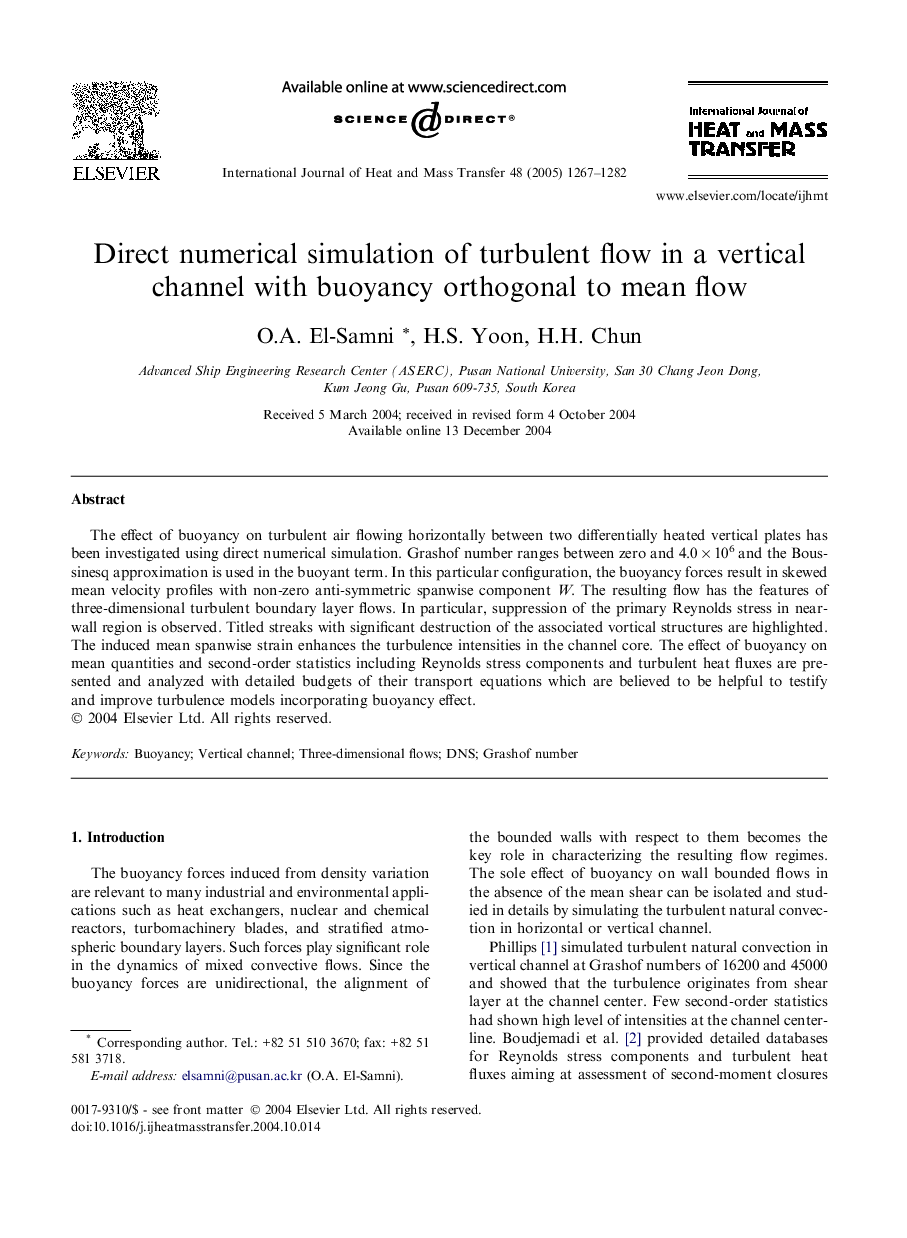| Article ID | Journal | Published Year | Pages | File Type |
|---|---|---|---|---|
| 9691606 | International Journal of Heat and Mass Transfer | 2005 | 16 Pages |
Abstract
The effect of buoyancy on turbulent air flowing horizontally between two differentially heated vertical plates has been investigated using direct numerical simulation. Grashof number ranges between zero and 4.0Â ÃÂ 106 and the Boussinesq approximation is used in the buoyant term. In this particular configuration, the buoyancy forces result in skewed mean velocity profiles with non-zero anti-symmetric spanwise component W. The resulting flow has the features of three-dimensional turbulent boundary layer flows. In particular, suppression of the primary Reynolds stress in near-wall region is observed. Titled streaks with significant destruction of the associated vortical structures are highlighted. The induced mean spanwise strain enhances the turbulence intensities in the channel core. The effect of buoyancy on mean quantities and second-order statistics including Reynolds stress components and turbulent heat fluxes are presented and analyzed with detailed budgets of their transport equations which are believed to be helpful to testify and improve turbulence models incorporating buoyancy effect.
Related Topics
Physical Sciences and Engineering
Chemical Engineering
Fluid Flow and Transfer Processes
Authors
O.A. El-Samni, H.S. Yoon, H.H. Chun,
